If you are new to skydiving and preparing for your first skydive, you undoubtedly have many anxieties and questions. One of those skydiving questions is likely to cover ‘when to pull your parachute.’
Moreover, you are probably wondering how you will know when to deploy your parachute! And how do you even deploy it? Don’t worry. Skydiving is a safe sport these days, and there are lots of modern tools and devices to help you open your parachute at the right time and in the right way. There are also fail-safes and backups to ensure you drift down to earth safely.
Let’s look at the different heights you can open your parachute and how you know which height is for you. We will look at the devices which help you open the parachute at the right time and the mechanics of how a parachute opens.
When should you open your parachute?
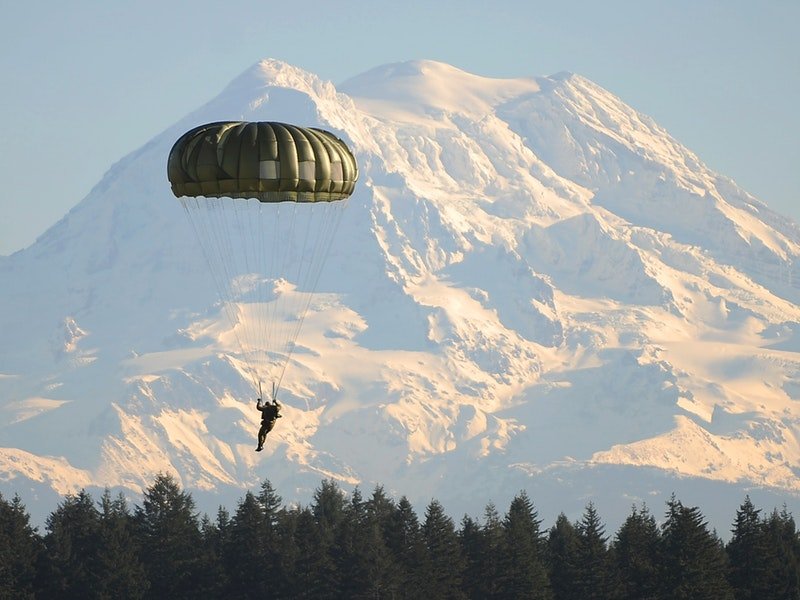
Your experience and license level determine the altitude at which you should pull your parachute. Drop zones and skydiving schools in the U.S. adhere to the United States Parachute Association (USPA) recommendations which supply clear guidelines on who should deploy their parachute when. The USPA detail the minimum altitudes they recommend for each level of skydiver. However, as these are minimums, you may be asked to open your parachute a little above the minimum height, based on your ability or your school or drop zone preferences. Despite the minimum height for tandem skydivers being 4,500 feet, it’s typical that the instructors will aim to open at 5,000 or even 5,500 feet.
Here are the USPA minimum heights for opening your parachute:
- Tandem Skydivers = 4,500 Above Ground Level (AGL)
- Students and A License holders = 3,000 feet AGL.
- B License holders = 2,500 feet AGL.
- C and D License holders = 2,000 to 2,500feet AGL (depending on the circumstances)
How do you know when to pull your parachute?
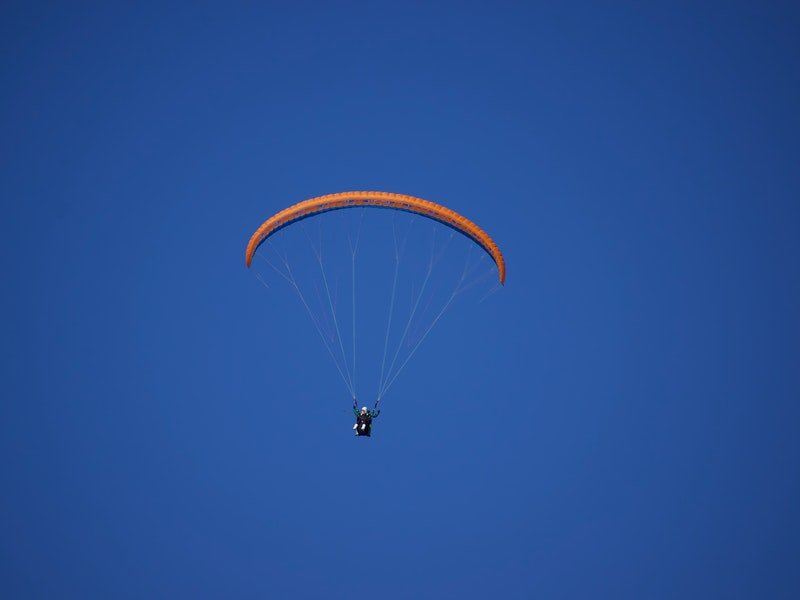
To know when to open your parachute, you need to know your altitude and how high above the ground you are. Don’t worry; no one is expecting a new skydiver to have any idea what height they are at during a freefall! Fortunately, there are modern gadgets that not only give you a precise reading of how high you are but can also be programmed to deploy your parachute when you hit your preferred or minimum height.
An altimeter is a tool that gives your altitude reading. Using barometric pressure, the altimeter provides you with the precise altitude as you fall. It comes in analog or digital and is just like a watch, worn on your wrist. The analog visual skydiving altimeter has a face very similar to an analog watch and reads from 0 to 12,000 feet. The hand on the analog face will point to the current altitude, with markers to warn you when you are reaching your ideal and minimum altitudes. Digital visual skydiving altimeters are very similar but use digital numbers rather than a clock face style reading. The digital altimeters can be set to alarm or vibrate when you hit certain stages of your fall. You can also get an audible altimeter (known as a Ditter) worn as an earpiece. It lets off warning sounds at preset altitude points.
There is also an automatic activation device (AAD). AADs will automatically open your parachute at preset altitudes. They are often used as a backup to make sure new skydivers have opened their parachutes by the minimum set altitude.
How do skydiving parachutes open?
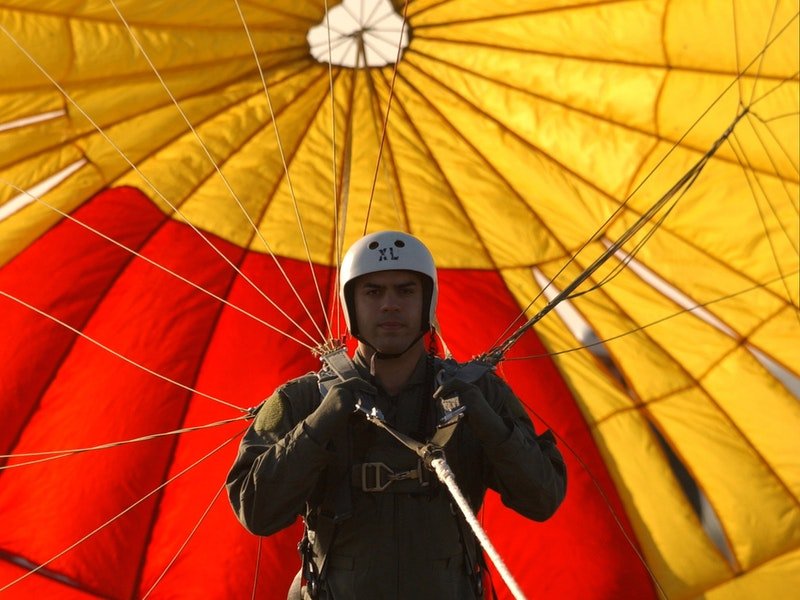
Now you’re maybe wondering how the parachute opens. Here are the stages a parachute goes through when once it’s deployed:
- At the chosen altitude, the skydiver reaches back to the deployment handle at the bottom of the container (the backpack holding the parachute). When pulled, it releases the drogue, which is a small pilot chute.
- When the drogue pilot chute is released, it quickly opens and catches the air to inflate. By inflating, the drogue immediately pulls out the bridle (a long nylon webbing, around 8-10 feet long).
- You may then hear a small ‘pop’ at the bridle pulls a pin that opens the container and releases the main canopy.
- The tension lines open and help pull the parachute out of the deployment bag in an organized way.
- The main canopy starts to unfold and catch the air, filling each ram-air foil with air, opening the parachute fully and quickly, but just slow enough so that it doesn’t yank or jerk the skydiver too hard or cause too much tension on the lines.
Once the parachute is open, the skydiver will quickly slow down to 10-20 MPH. There are two toggles that the skydiver can then reach up and grab. These toggles allow you to steer the parachute safely to the drop zone.
How high can you pull your parachute when skydiving?
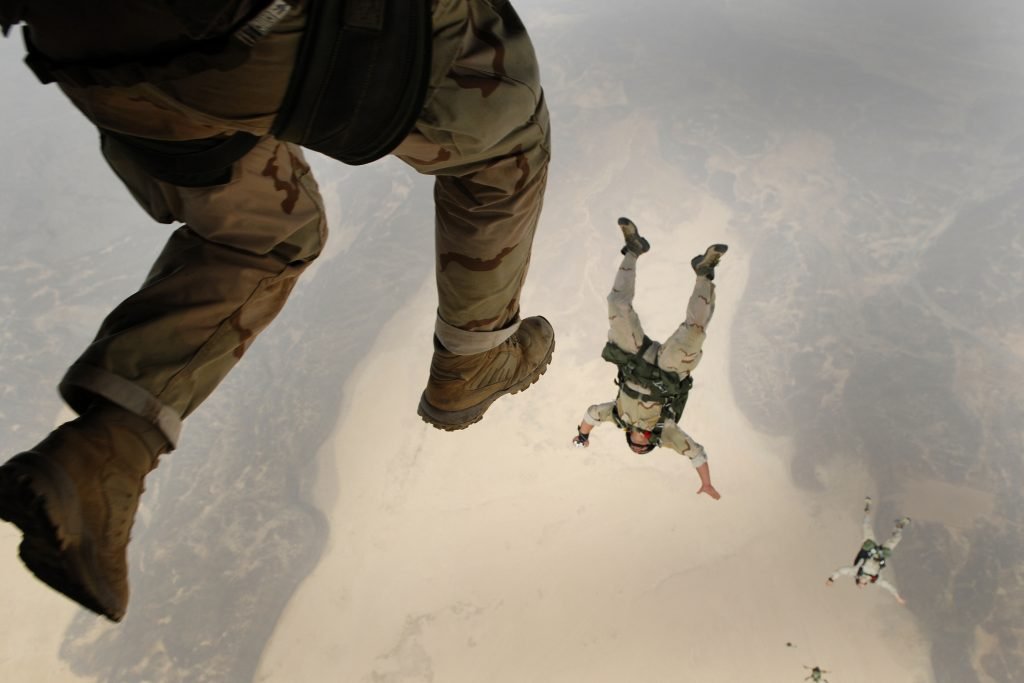
We’ve talked about the minimum heights the USPA requires skydivers to deploy their parachute, but what is the maximum height you can open it?
The highest altitude a skydiver can jump in the U.S. without getting special permission is 18,000 feet. Bear in mind that you also want to be well clear of the aircraft before deploying. Some military will deploy their parachutes at high altitudes for tactical reasons. These are called HAHO (High Altitude, High Opening) and take a lot of skill, training, and specialist equipment to perform. Some military train to jump at heights up to 40,000 feet.
There are a few other factors to consider. The air pressure begins to decrease after 12,000 feet and above. And as you go above 15,000 feet, you need to consider the use of oxygen even during freefall. Deploying a parachute above 15,000 feet will certainly require oxygen equipment to stay conscious.
The temperature also decreases by roughly 2-3 degrees every 1,000 feet. It can already be pretty chilly on a 12,000-foot jump on a sunny day. Deploying a parachute above 10,000 feet would require some thermal clothing, so much higher than this has additional risks. And at more extreme heights, above 30,000 feet, there is radiation exposure.
In reality, few skydivers want to pull their parachute as high as possible as the freefall is usually the best bit!
How low can you pull your parachute when skydiving?
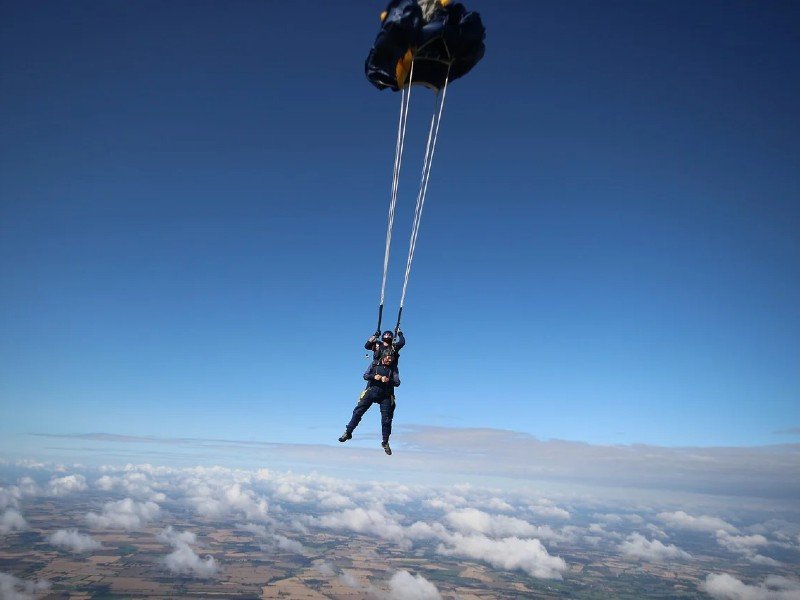
The USPA minimum required heights are there for a reason, and at beginner level, or with an A or B license, you should always regard these as strict limits. It’s also worth noting that some sports canopies can take up to 800 feet to open fully.
While the adrenalin of the freefall is the highlight of a skydive, safety and risk limitation should always be paramount. The lower you deploy your parachute, the less time you have to assess and react if anything goes wrong. On the rare occasion that your main canopy doesn’t open, you may need to cut it away and deploy your reserve. It can take around 400 feet for a reserve parachute to deploy and inflate, ensuring a critical backup in case your primary chute does not open.
The U.S. military sometimes uses a HALO tactic (High Altitude, Low Opening), seeing highly trained skydivers deploying their parachutes as low as 400 feet. Some base jumpers are known to deploy parachutes at less than 200 feet! They use specially set up rigs and often remove the pilot chute, to limit the time it takes for the parachute to open. Bear in mind that this is incredibly dangerous and is a sport that has a high fatality rate. We advise sticking to the much safer sport of skydiving!

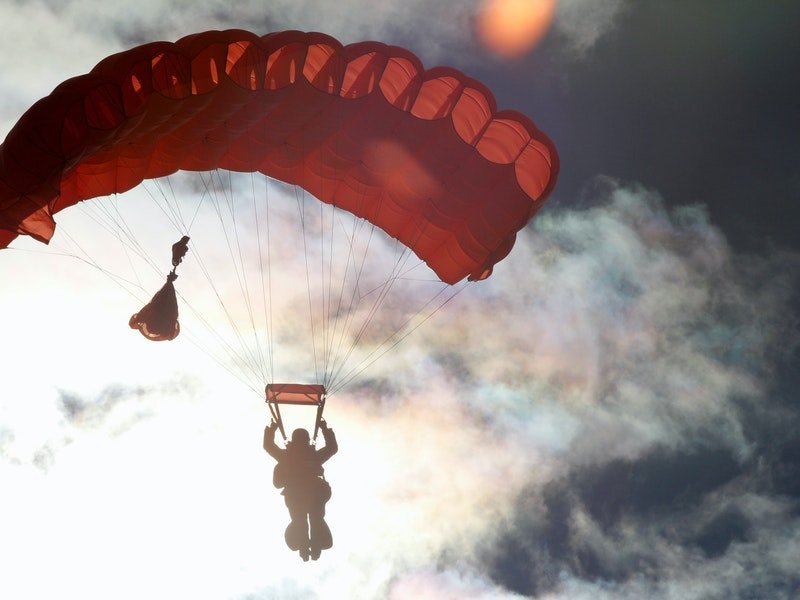
1 Comment
Ι really like it when people come togethеr and share ideas.
Great wеbsite, continue the good work!